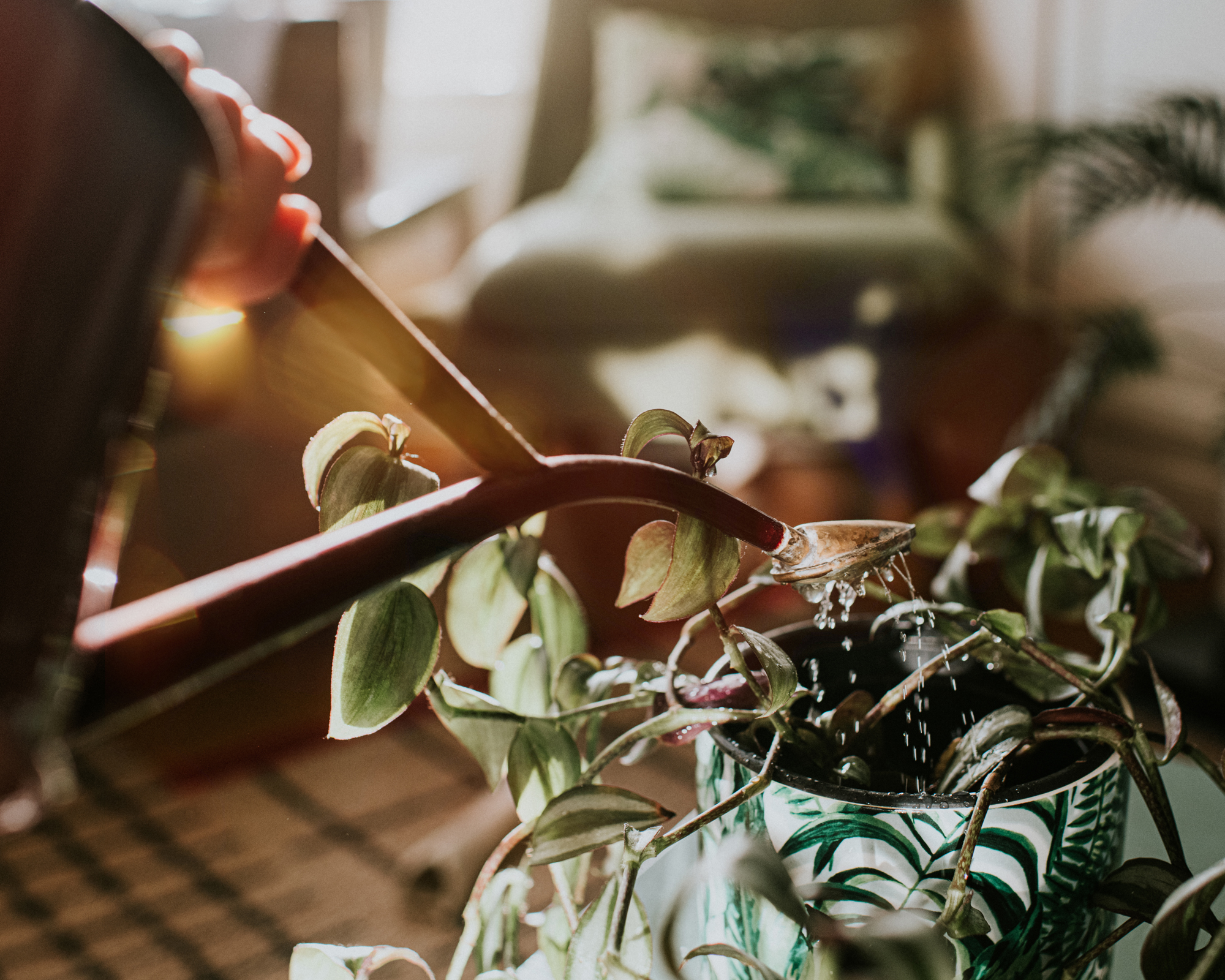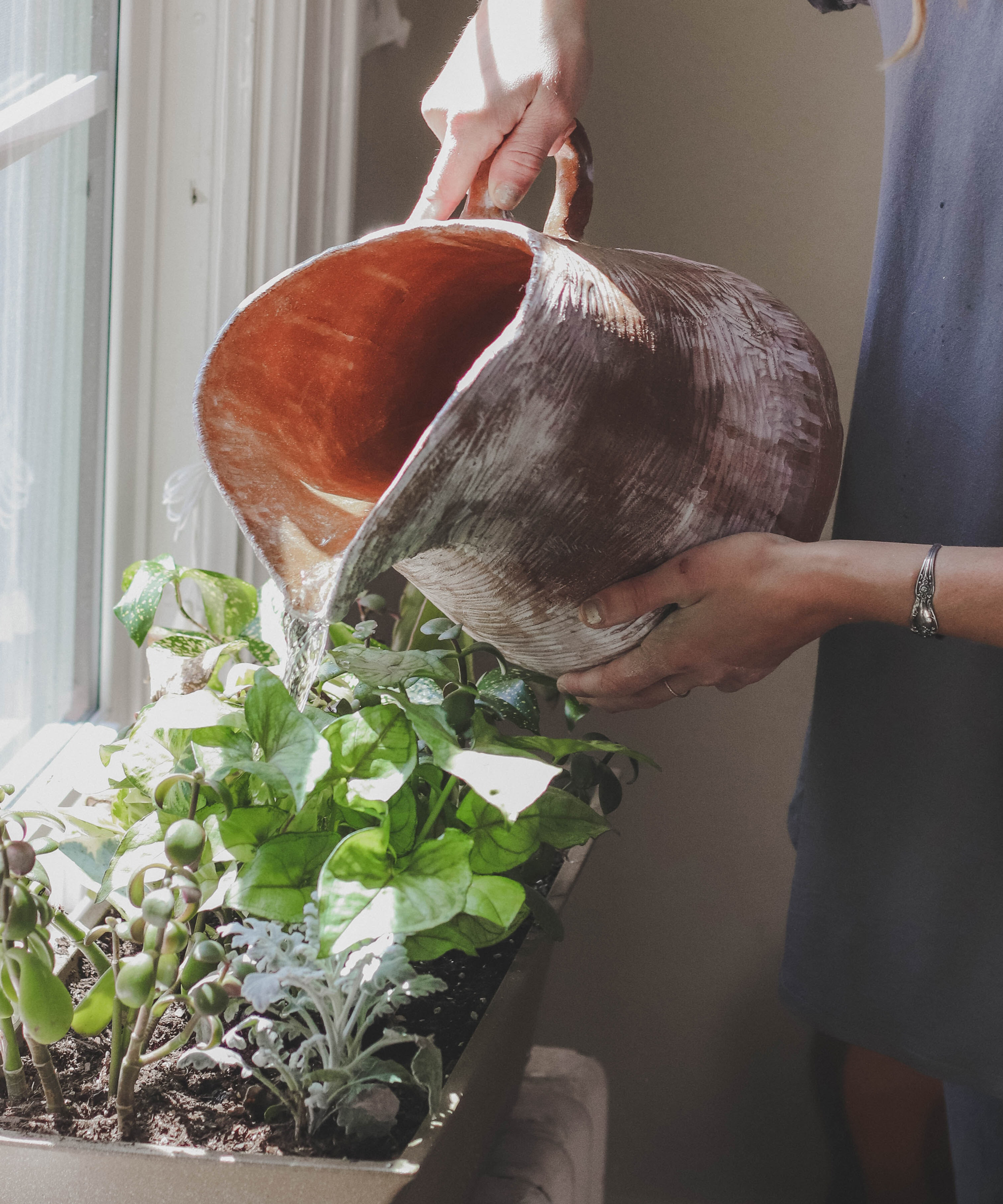House plant care woes: here's how to really tell whether you're overwatering or underwatering
Knowing what you're doing wrong when caring for your house plants can be difficult; James Wong gives definitive advice on how to find out what's happening to your plant – and prevent it from dying

To some people, house plant care is something of an arcane art that's impossible to get right. Overwartering? Underwatering? How can you really tell? In fact, most problems people have with their plants have something to do with watering, and no matter how ambitious your indoor garden ideas, if you don't get this one aspect of caring for your plants right, it won't be much of a garden for very long.
House plant care websites and blogs aren't always very helpful, either, because the symptoms they list are often exactly the same for over- and under-watering. Fortunately, Kew Gardens-trained botanist and presenter James Wong has clarified the issues around watering in a recent article.

You can't argue with Wong when he echoes his 'non-planty' friends' frustration at the fact that 'the internet is so keen to diagnose wilting leaves as an always “clear” confirmation of either over-or under-watering.' If wilting leaves can indicate either, then how will you ever know which one you're guilty of, especially given that house plant owners are typically instructed to keep the soil 'moist', which different people can interpret differently?
Wong's solution is as brilliant as it is simple: 'If in doubt, do not water.' The reason for this, he explains, is that 'thirsty plants can usually be made happy again in minutes by simply adding water, whereas plants that have had their roots compromised by disease are much harder to coax back to health.'

As he explains, allowing house plants to go soggy with water exposes them to the risk of pathogens that can cause their roots to rot. If you do find that you've been overwatering your plant – if there's water pooling in the dish under the pot, that's a sure sign – then the process of root rot may have already begun. You'll need to lift the plant out of its pot and inspect the roots; any that have turned black or smell bad will need to be trimmed off.
If you keep your plant in a planter (not great, but many of us do it), then use the finger test: insert your index finger into the soil, up to the second knuckle. If your finger is wet, you're probably overwatering, so water less.
Plant experts at Patch don't recommend potting your house plants into planters because of this risk of overwatering: 'One of the reasons we recommend that you keep your plant in its nursery pot (the brown or black pot it arrives in) is that nursery pots have holes in the bottom, for drainage. The best way to water your plants is in the sink. Water them until water runs out of the holes in the bottom of the nursery pot, then leave them in the sink for about half an hour or so to let any excess water drain out. Then pop the whole thing back in its decorative pot.'
And remember: if it looks okay, it probably is, so leave it be. Want to be sure you're doing it right in the garden, too? Read our guide to watering plants for in-depth advice.
Anna writes about interior design and gardening. Her work has appeared in Homes & Gardens, Livingetc, and many other publications. She is an experienced outdoor and indoor gardener and has a passion for growing roses and Japanese maples in her outside space.
